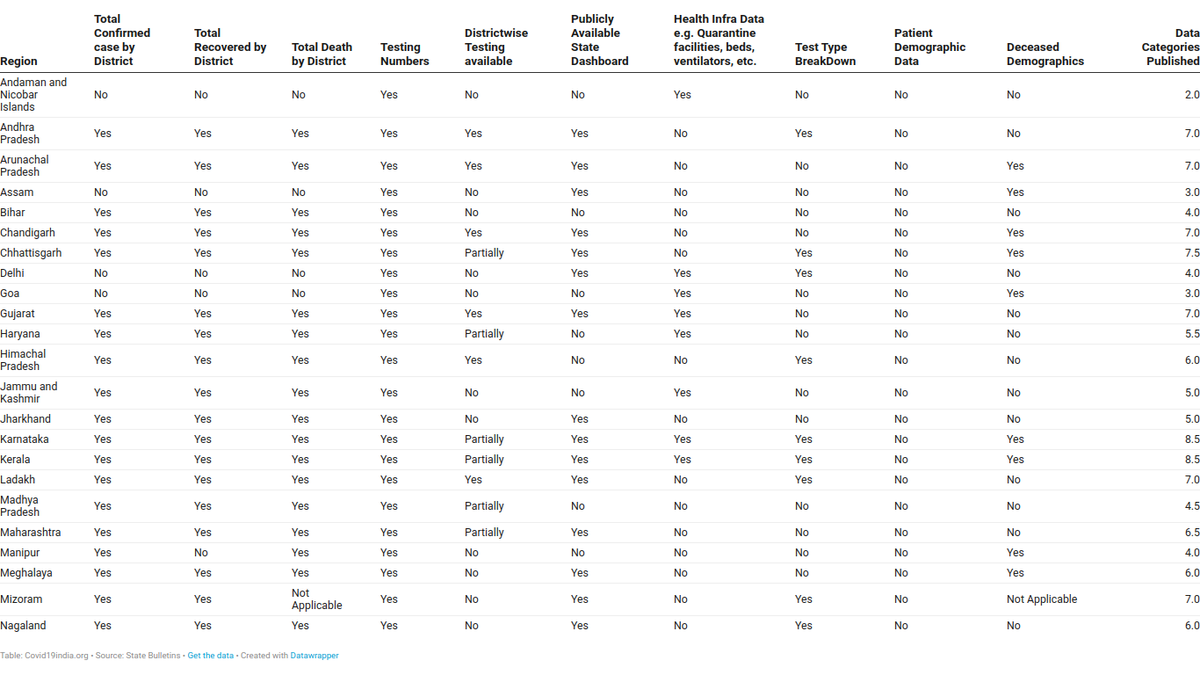State data quality matrix - Sept. '20: 4 months after we last published the data elements published by states in their Covid19 daily bulletins, we take a look at the state of data as of Sept.
Refer attached images for the matrix and ensuing thread for a brief commentary.
1/8

Refer attached images for the matrix and ensuing thread for a brief commentary.
1/8
https://twitter.com/covid19indiaorg/status/1265697208546058241


➡️ Change in phase of pandemic, leads to changes in reporting: Details like demographics, contact details of patients have been dropped by states that used to publish it as cases increased. Other data points like bed availability, test type breakdown etc. have been added.
2/8
2/8
➡️ Need for a minimum national reporting standard: Still, wide variance is seen in data points reported by states. 6 months in, some states do not report critical category like breakdown by districts. Calls for a national reporting standard of minimum required data fields.
3/8
3/8
➡️ Standardization of terms, methodologies and timelines: Comparison between states become difficult when these are not standardized. Some states report data from 9am to 9am, some from 5pm to 5pm, while some report previous day's data the next day.
4/8
4/8
➡️ Clarity for testing data: With increased use of RATs, the need to report test types and +ves by test type has become important off late. Very few states publish this. Standardisation of reporting standard required here so that all states declare breakdown by test type.
5/8
5/8
➡️ Health Infra data: As cases have increased, data on capacity and availability of hospital beds, ICU beds, O2 beds etc. have become important. Multiple states include this data now and will be good for others to adopt.
6/8
6/8
Non personally identifiable demographic data: Data points like age, gender, symptoms, duration of hospitalisation, co-morbidities etc. are critical for prescriptive analysis. Very few states publish this, limiting analysis and interventions based on critical demographic data
7/8
7/8
6 months - In retrospect: A central directive on data reporting standards, conventions, definitions, timeline etc. would have enabled a uniform and comparable data reporting paradigm across states/UTs. Will we see that in the coming months?
8/8
8/8
• • •
Missing some Tweet in this thread? You can try to
force a refresh









